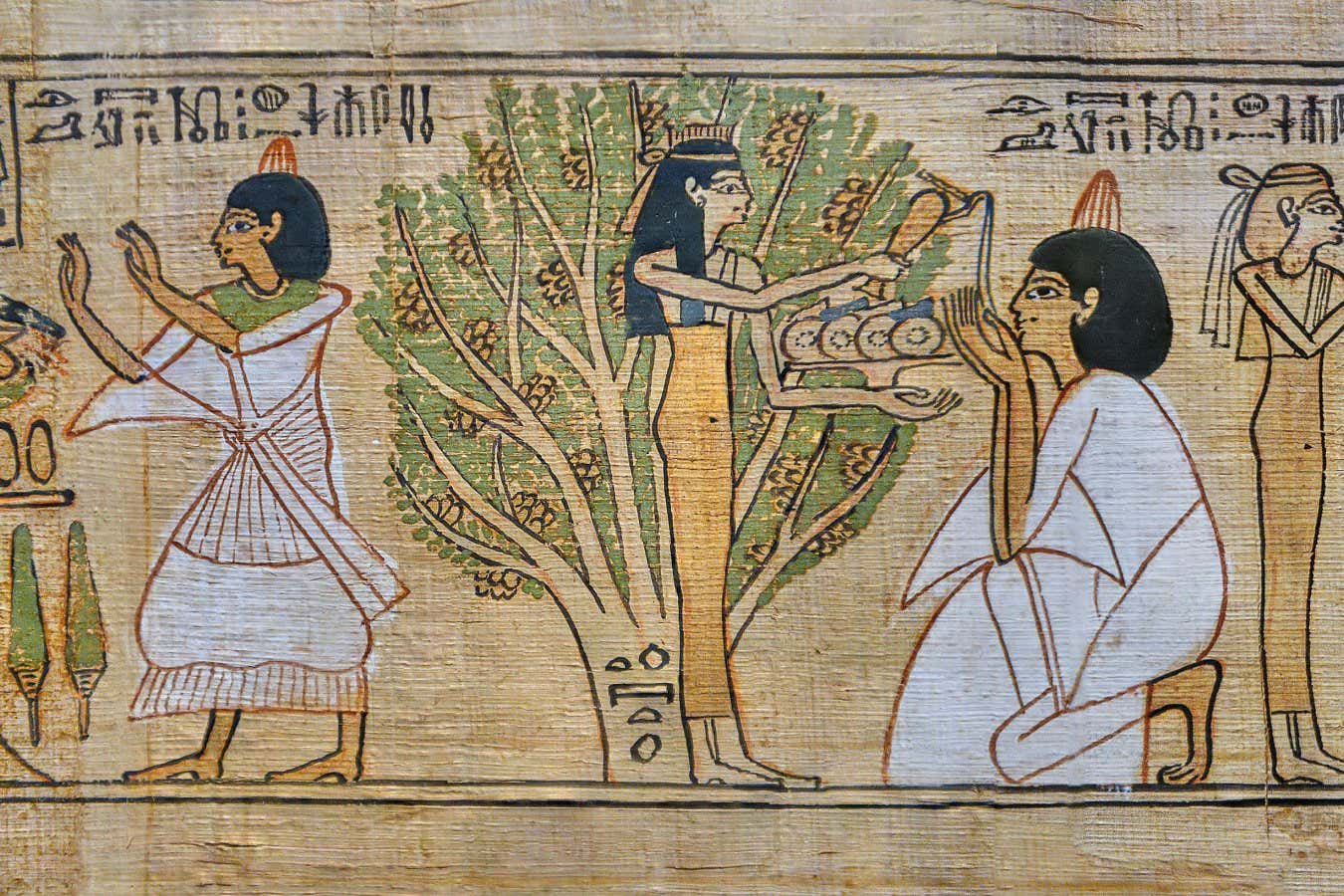Ancient and fragile papyrus samples are at risk of being damaged by fungi, but a wasabi-based treatment can disinfect them without damage
By Jeremy Hsu
26 February 2024
Ancient Egyptian papyrus scrolls can be damaged by fungi
Paul Williams / Alamy
Wasabi vapours are potent enough to kill fungi growing on painted papyrus fragments – all without damaging the fragile artefacts or altering the appearance of their vivid colours.
The unique disinfecting strategy could help archaeologists and museums preserve documents written on paper made from the papyrus plant, a material used for thousands of years in ancient Egypt, Greece and the Roman Empire. “The bio-deterioration of papyri is a worldwide problem,” says Hanadi Saada at the Grand Egyptian Museum in Egypt.
Fungus can damage delicate papyrus, but some disinfectants can be just as harmful. So Saada and her colleagues are studying less harsh “green” treatments. In this experiment, they mixed up a paste of wasabi – the popular Japanese condiment derived from a plant related to horseradish and mustard – and placed it on aluminium foil next to papyrus samples.
Advertisement
Read more
Ancient Herculaneum scroll piece revealed by AI – here's what it says
Instead of risking historical papyrus artefacts, the researchers prepared replicas for the experiment. The modern papyrus samples were painted different colours, such as red, yellow and blue, and then heated to 100°C (212°F) in an oven for 120 days to simulate the natural ageing of papyrus over 1000 years. Finally, they were exposed to several fungal species that are known to infest archaeological papyri.
After three days, the wasabi treatment had eliminated the fungal contamination without impacting the papyrus samples’ pigments. A follow-up check one month later showed the same result.
